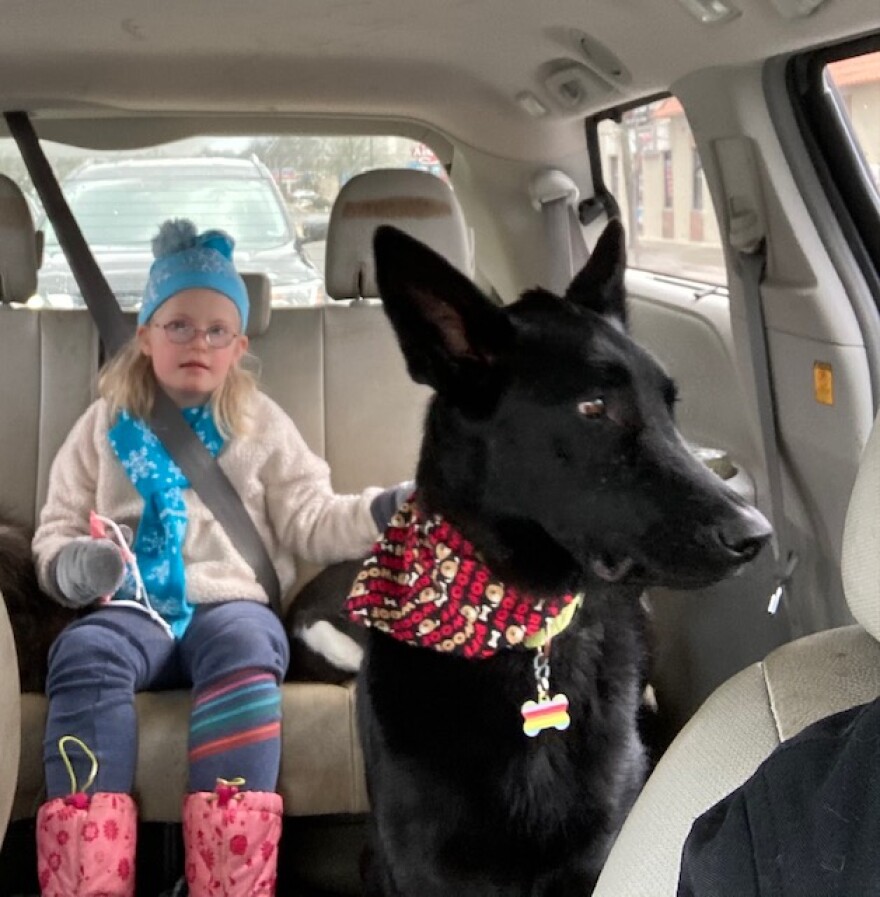Eight-year-old Lyra Christensen loves to play the harmonica after a long day at school.
She is one of more than 250,000 public school students with disabilities in Ohio -- that’s about 15 percent of the student population. Due to her intellectual disability, Lyra has an individualized education program or IEP at Akron Public Schools.
When the pandemic struck last spring, some Ohio schools continued to offer in-person classes for students with disabilities. Akron did not, which meant that Lyra had to learn remotely. Her mother, Holly Christensen, says, it felt like the IEP went out the window.
“It was impossible to try to teach her through a computer. How are you going to do occupational therapy with manipulatives, unless one of us sat there all day long, and we both work.”
These days, Lyra learns in a general education classroom alongside her peers without disabilities. Her father Max Thomas says returning to in-person learning had a positive effect.
“As soon as she was able to go back to school, and initially it was one day a week, it was transformative. Her excitement for learning went up, her abilities went up.”
There has been an increase in the number of students with disabilities who are learning in general education classes.
Studies also show that there are benefits of inclusive classrooms, including stronger social connections.
Special Education and COVID’s Impact
But as with most things school-related, Covid complicated special ed.
Shannon Bolinger is a stay-at-home mom to 15-year-old Kyle and Jaci. The twins attend Akron’s Ellet High School but have had different experiences. Bolinger’s son Kyle learns in a resource room for kids with multiple disabilities and is on the honor roll. But her daughter Jaci, who’s also on an IEP, has struggled in a general ed class.
“I think that is because Kyle you can visually see that he has a disability and needs things, where his sister would appear typical just like you and I and everybody else, so a lot of her struggles were taken for granted.”
Bolinger became more involved in her children’s education during remote learning. But eventually, it took a toll on their mental health.
“Respite is a really huge thing, and the schools really fill the burden that our state, county and city governments are not addressing for us. So, a lot of us really relied on them for that break. You know, because if parents don’t take care of themselves, we can’t take care of our families very well either. Eventually, there’s going to be a breakdown, a deterioration.”
Isolation, Loneliness and Missing Friendships
Conni Zeno, an intervention specialist at Ellet High School, says the biggest loss of the past year for students with disabilities may be friendships.
“The kids missed the friendships. The kids, and I think, the parents missed some of that [deep breath], ‘I need a little time,’ because my kids are with their parents all the time, not like the mainstream kids.”
Nancy Presutto, an educational interpreter for Akron Public Schools, was not worried about students with disabilities catching up educationally. She was more concerned about the isolating effects of the pandemic, especially for her hard-of-hearing students.
“There are times when they‘ll come into my Google Classroom during office hours and they really don’t ask for any help with any work. They don’t want to have anything explained. They’re just, you know, what did you do this weekend? They want to chat.”
Teaching Independence Through Job and Life Skills Training
The pandemic also disrupted job and life skills training. To counter that, Zeno introduced remote cooking classes for her students.
Now that her students are back, the high school is using a grant to help her students run a spirit-wear business – learning and applying those life skills.
“A lot of our kids tend to be a little bit more sheltered where the parents do things for them but we’re trying to make them more independent.”
Holly Christensen, whose daughter lost ground during the pandemic, says COVID exposed the need for more resources and support.
“The Akron Public School teachers that I have interfaced with, which has been many of them for 20 years, are some of the most passionately committed teachers I know, but the system hamstrings them all too often.”
She says what’s not yet clear is if the system can find new ways to support the teachers, parents and children.







Copyright 2021 WKSU



